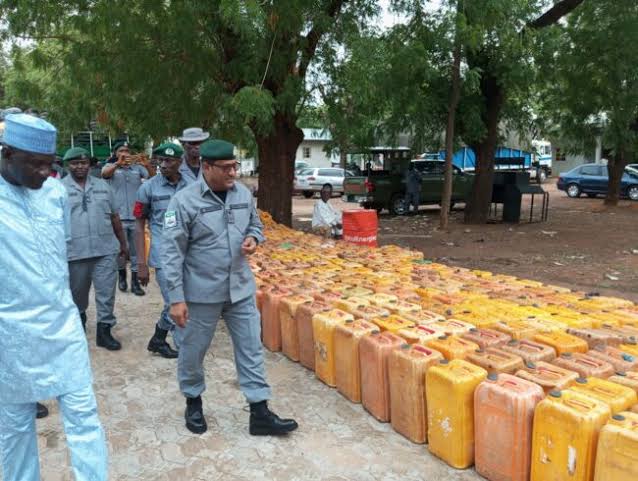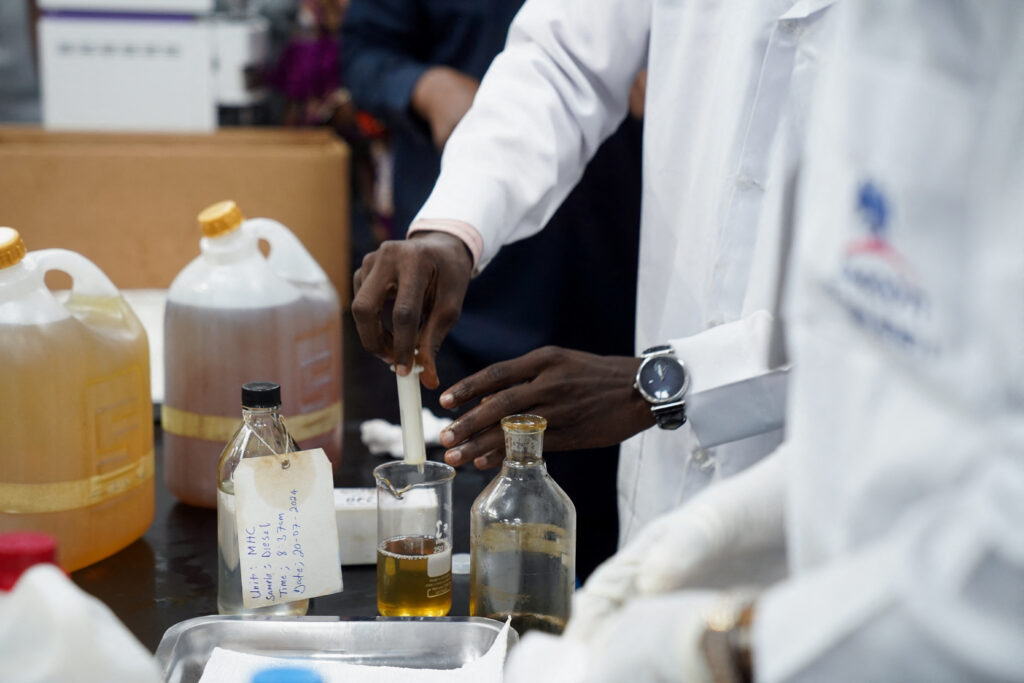DisCos distribute 98% of power evacuated from TCN in 7 days, improve in energy off-take

Samuel Agbelusi
A total of 23,854.42 MegaWatts representing 98 percent of power evacuated by the eleven(11) electricity Distribution Companies (DisCos) from the Transmission Company of Nigeria(TCN) were distributed between Saturday, September 17, and Friday, September 23, 2022, out of total of 24,493.3MW transmitted to the distribution network in the period under review.
This was contained in the analysis of the data EnergyDay obtained from Nigeria’s Power System Operator via its website for the period under review.
The figure, therefore, showed that about 638.88 MegaWatts(MW) were unaccounted for within the distribution network representing 2.6 percent of the total quantum of power sent to the DisCos by the TCN.
EnergyDay further gathered that 2.6% represented the limited amount of electricity lost within the distribution network due to some technical issues and other common phenomena.
This reflected the critical infrastructure and operational challenges that exist within the distribution network( transformers and lines) of the industry.
The significant quantum of power distributed by the DisCos further reflected an improvement in the DisCos’ evacuation performance which has grown in recent times.
Based on the data obtained by EnergyDay, as of Saturday, September 17, 2022, the DisCos received 3,567.43MW from TCN and distributed only 3,468.07MW(actual power consumption) for that day.
This figure showed that about 99MW, equivalent to 2.78% of the total electricity transmitted for the day, was unaccounted for within the distribution network.
The breakdown of the distribution of power from the DisCos to the consumers for that day showed that Ikeja DisCo distributed the highest with 525.05MW and Yola DisCo had the lowest distribution with 97.31(MW).
Quantum of electricity distributed by others includes Benin Disco(334.76MW) Eko (427.61MW) Enugu (297.10MW) Abuja Disco (464.22MW) Ibadan (428.69MW) Jos (179.31MW) Kaduna (234.03MW) Kano (222.06MW) and Port-Harcourt (257.93MW).
Meanwhile, on Sunday, September 18, the DisCos received 3,460.57MW from the TCN, as it managed to distribute 3,447.28MW (actual consumption), therefore rejecting only 13.29MW (0.38%) received for that day.
The data for that day showed that Ikeja distributed the highest with 522.92MW and Yola had the lowest distribution with 102.00(MW).
Others are Benin (322.26MW) Eko(405.64MW), Enugu (336.50MW), Abuja (452.53MW), Ibadan (376.04MW), Jos (189.51MW), Kaduna (239.74MW), Kano (246.31MW) and Port-Harcourt (253.83W).
The Monday figure showed that DisCos received 3,526.04MW from the TCN, after distributing 3,369.24MW within its network. It, therefore, was unable to utilise about 156.8MW representing 4.44% of the power it obtained from TCN.
The figure for the day showed that Ikeja Electric distributed 514.91W, while Yola DisCo gave out 102.37W.
The breakdown for the day showed that Benin Disco distributed 325.90MW, as others including Eko Electric 389.25MW, Enugu (337.85MW), Abuja (453.92MW), Ibadan (334.25MW), Jos (179.09MW), Kaduna (223.38MW), Kano (245.55MW) and Port-Harcourt (262.77MW).
The DisCos received on Tuesday, received 3,496.25MW, despite 3,336.67MW being wheeled for actual consumption. This, therefore, showed that about 159.58MW, representing 4.5% was wasted in the distribution network. This figure was the highest technical losses recorded in the period under review.
Ikeja Disco on that day wheeled 503.52MW(highest) while Yola distributed 103.01W(lowest) for that day.
Others are Benin (307.79MW), Eko (405.61MW), Enugu(284.12MW), Abuja (446.60MW), Ibadan (354.36MW), Jos (193.42MW), Kaduna (238.35MW), Kano (252.56MW) and Port-Harcourt (247.33MW).
On Wednesday, September 21, Discos distributed 3,295.17MW, after it received 3,408.8MW from TCN. This figure showed that about 113.63MW, representing 3.3%, was wasted within the distribution network.
The breakdown for the day showed that Ikeja Disco received the highest with 529.71 MW, and Yola also received 97.25MW, being the lowest.
Others are Benin (244.77MW), Eko (393.91MW), Enugu with (310.14MW), Abuja (481.43MW) Ibadan (364MW), Jos (180.63MW), Kaduna (226MW), Kano (230.77MW) and Port-Harcourt(236.55MW).
On Thursday, DisCos received 3,461.59MW from the TCN, after distributing 3,490.99MW. It, therefore, was able to record about 29.4MW in excess representing 0.84% of the power it obtained from TCN.
The figure for the day showed that Abuja Electric did the highest distribution for actual consumption with 504.25MW with Yola still retaining the lowest rank having been allocated 108.89MW.
The breakdown for the day showed that Benin Disco distributed 305.80MW, as others including Eko Electric 410.08MW, Enugu (322.25MW), Ikeja (492.94MW), Ibadan (395.06MW), Jos (193.39MW), Kaduna (253.70MW), Kano (262.52MW) and Port-Harcourt (242.11MW).
Meanwhile, on Friday, September 23, the Discos received 3,572.62MW from the TCN, as it managed to distribute 3,447MW. They were unable to wheel 125.62MW (3.5%) of the power allocated on that day.
The data for that day showed that Ikeja received the highest with 511.72MW and Yola received the lowest with 108.94(MW).
Others are Benin (311.22MW), Eko(409.39MW), Enugu (312.81W), Abuja (472.69W), Ibadan (392.34MW), Jos (196.47MW), Kaduna (249.81MW), Kano (246.18MW) and Port-Harcourt (236.20MW).
The analysis by EnergyDay for the period under review, therefore, showed that 3,295MW, being the lowest wheeled for actual consumption by the DisCos, was recorded on Wednesday, September 21, while the highest was attained on Thursday with 3,490MW.
A summary of the data gathered within the period under review showed that despite the improvement in the quantum of power that TCN released to the 11 DisCos, a significant portion of the power was allocated to the end users. The DisCos also accounted for limited losses compared to the previous record of allocation and losses.
However, inefficient transmission networks remained a significant factor inhibiting growth levels within the entire electricity market and the Nigerian electricity value chain.







